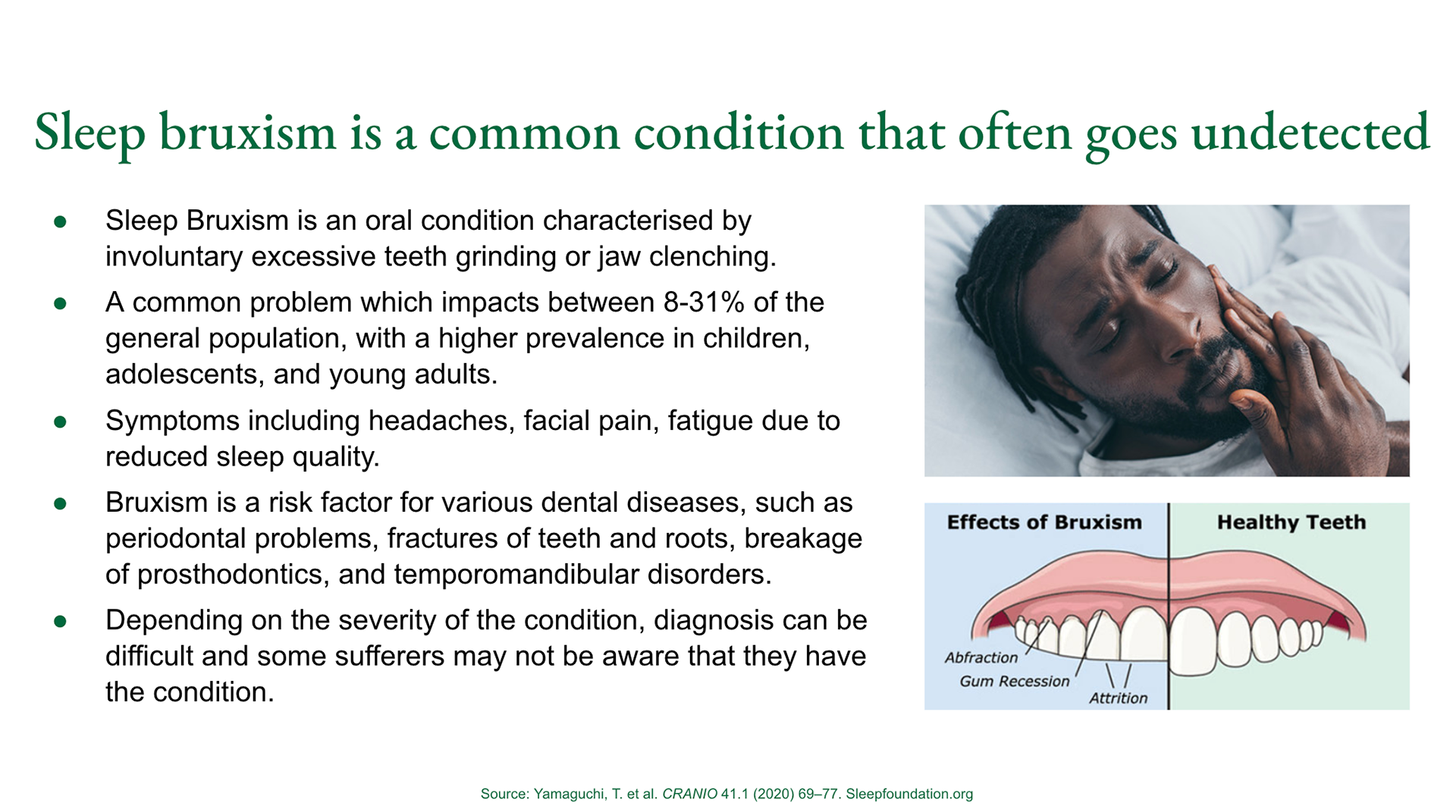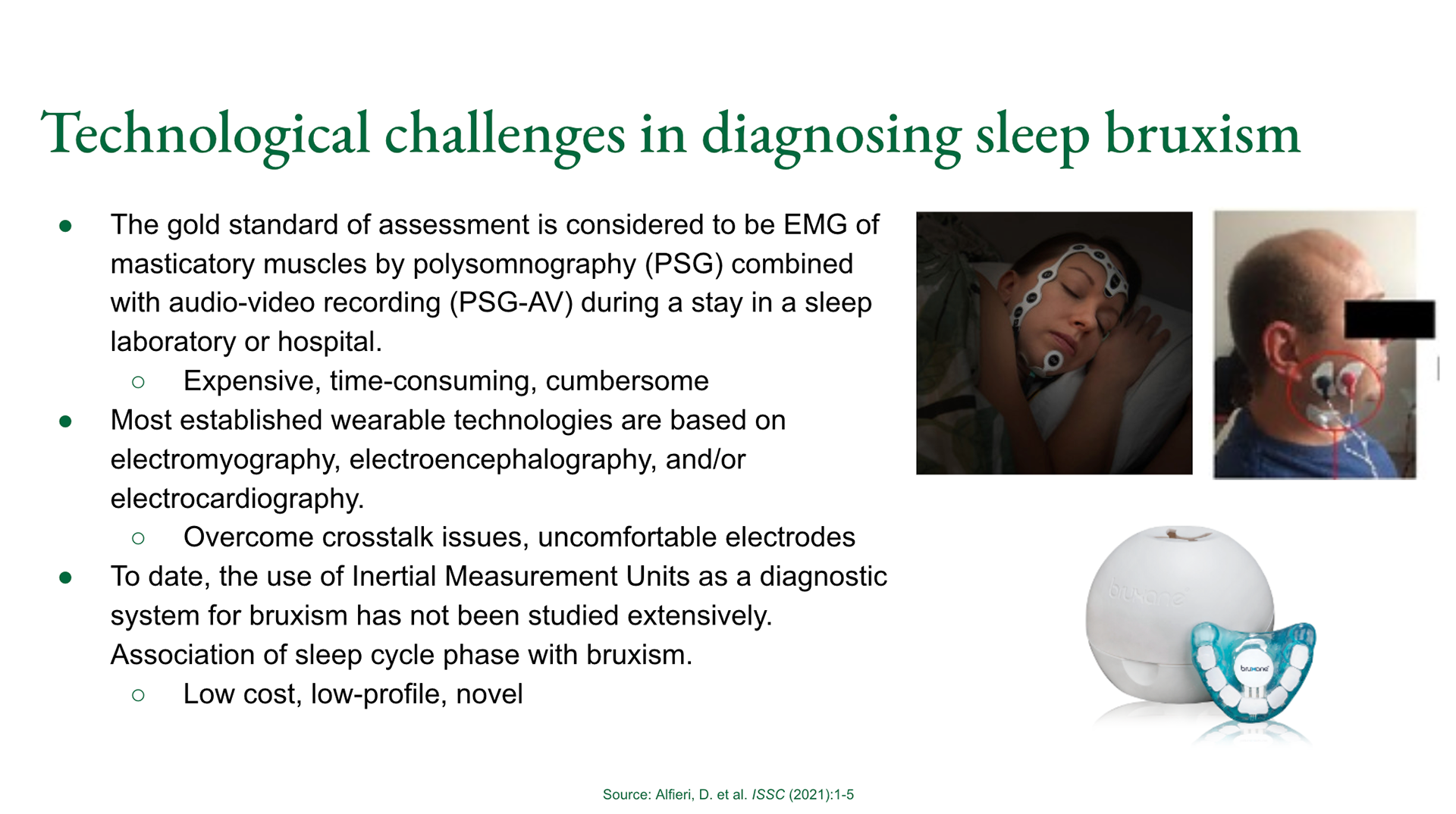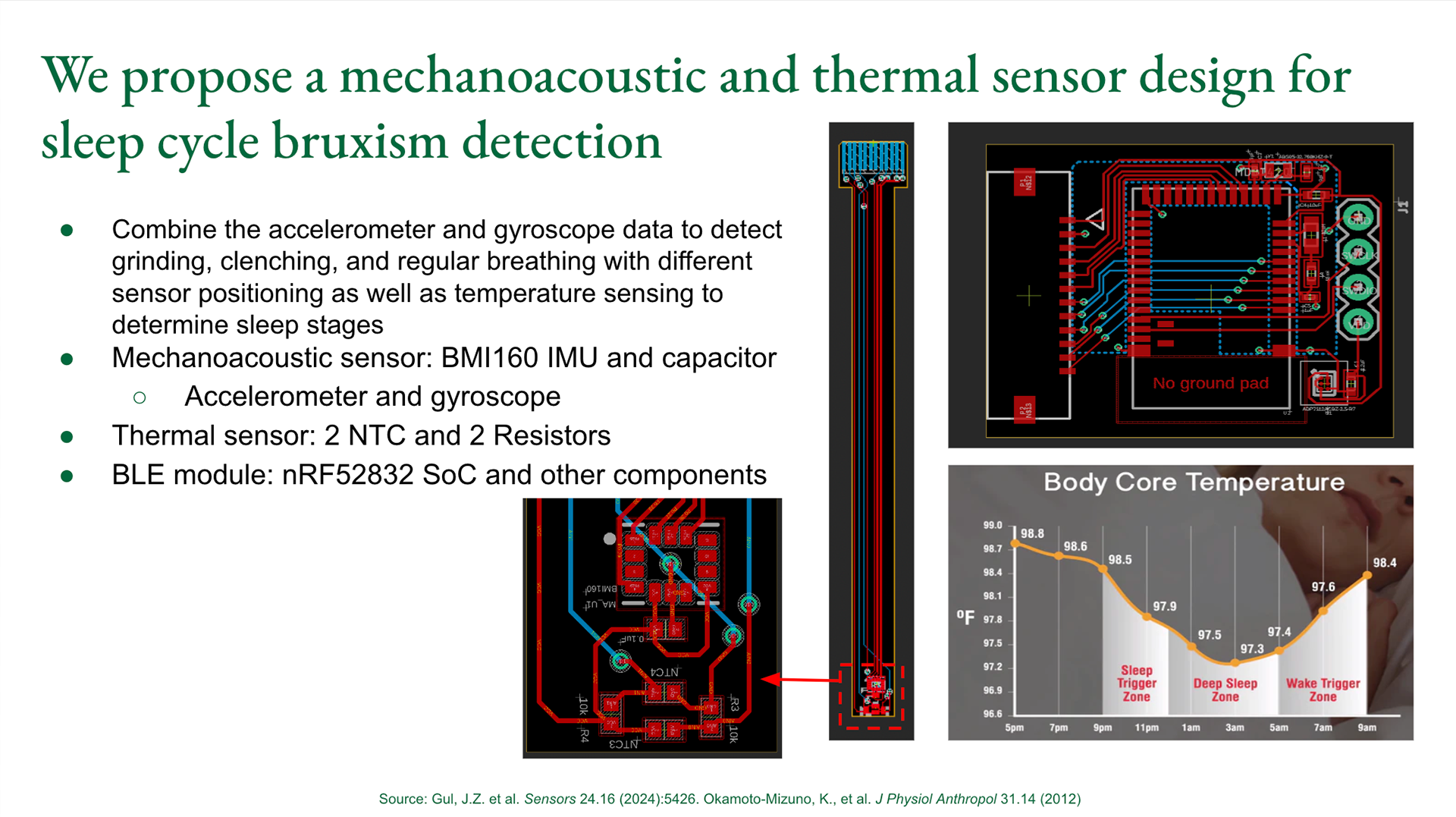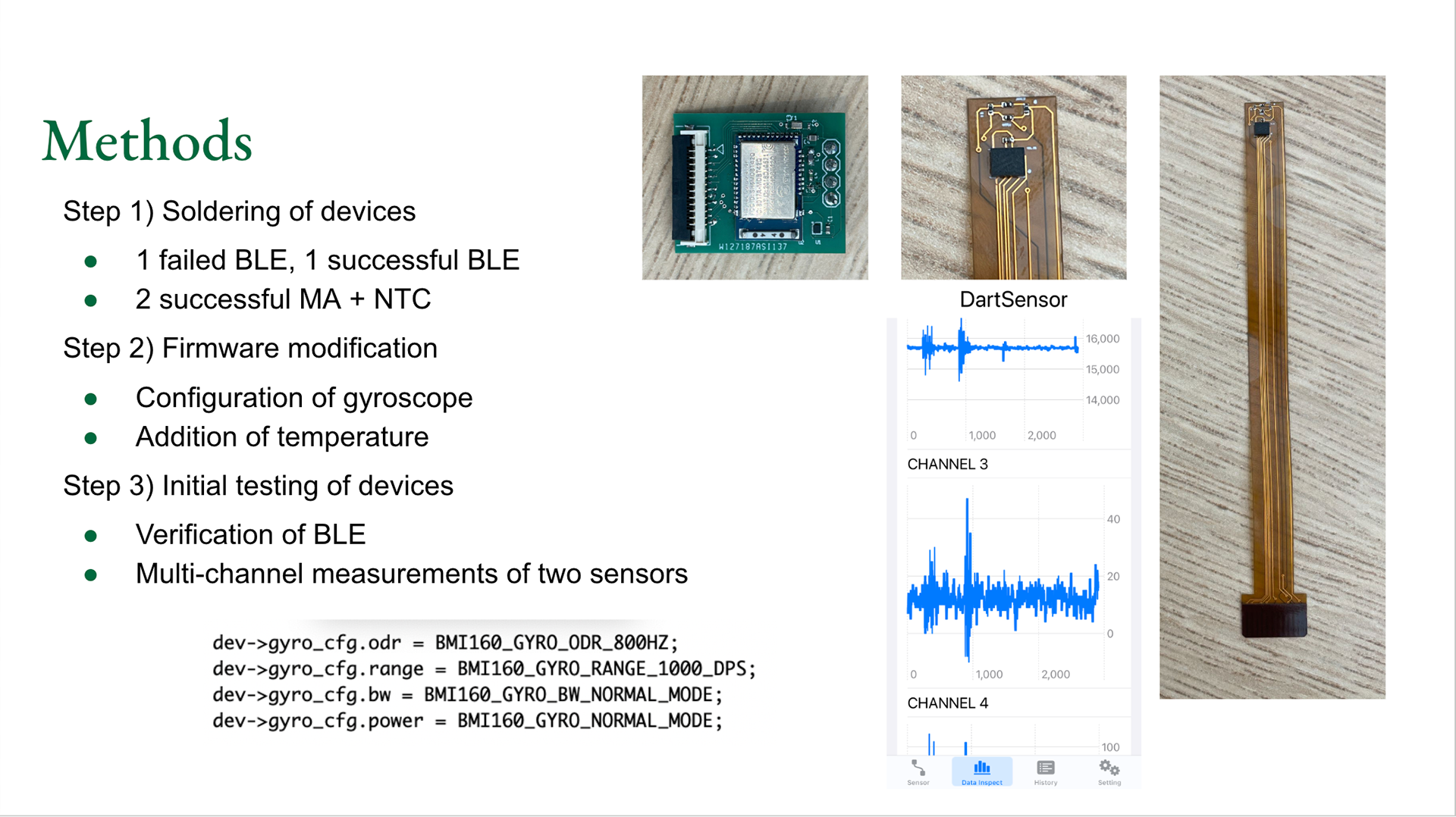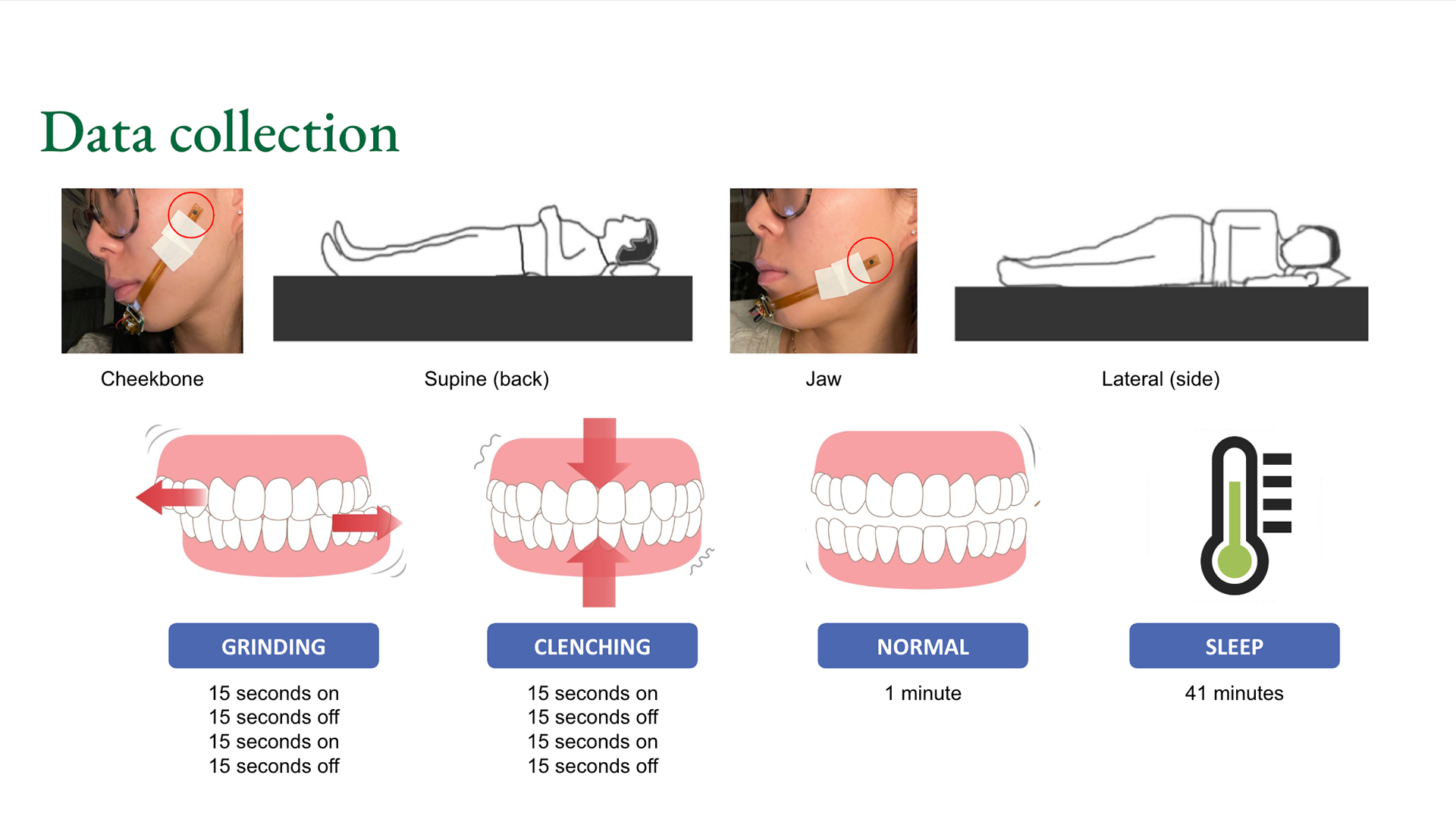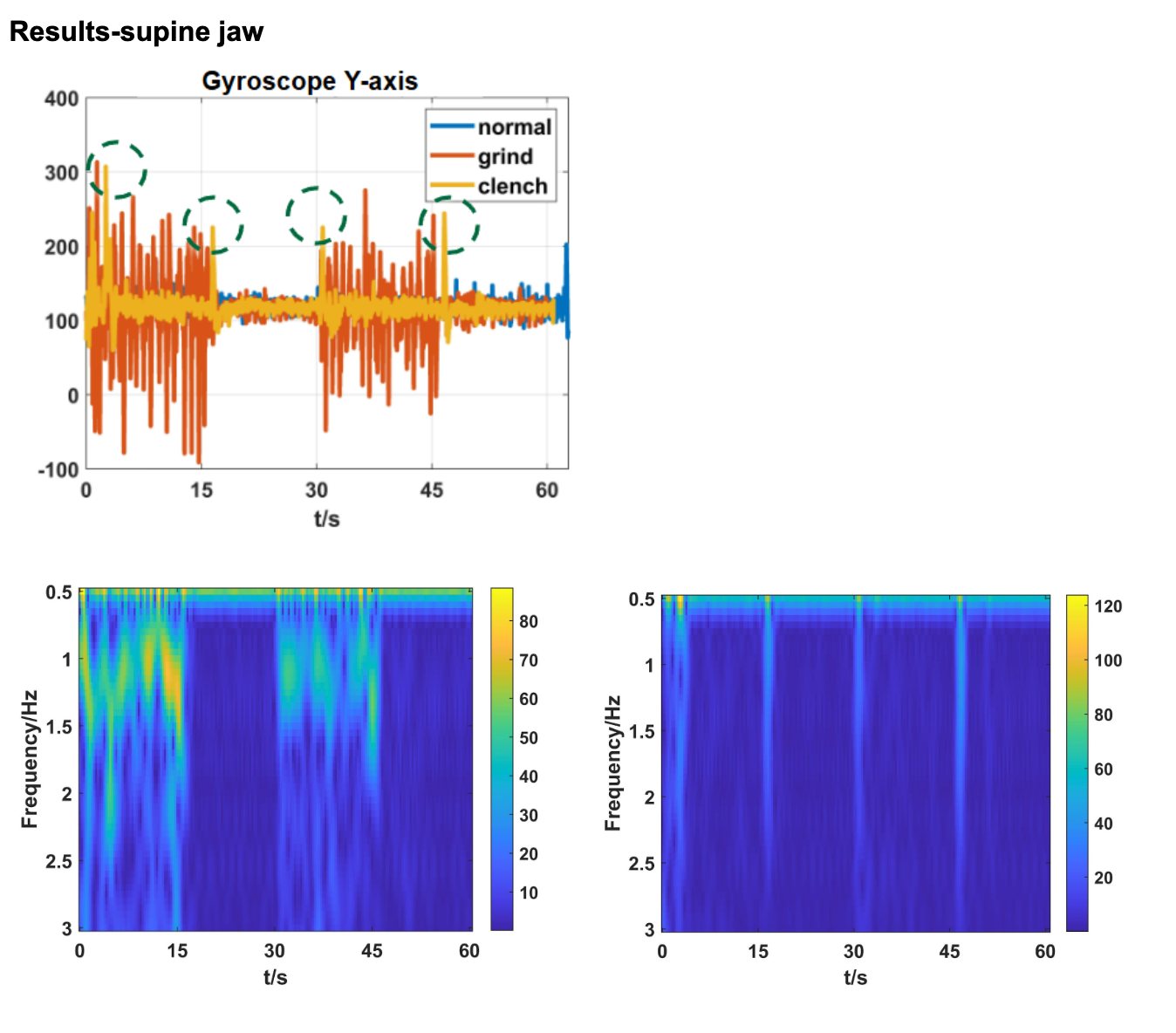Mechanoacoustic and thermal sensor design for sleep cycle bruxism detectio
Winter 2025 - Dartmouth College
This study aimed to explore the feasibility of using Inertial Measurement Units (IMUs) integrated with thermal sensors for the detection of sleep bruxism. Our key findings indicate that the supinated jaw and lateral cheek sensor placements were the most effective for capturing mouth movements associated with bruxism, specifically grinding and clenching activities. These placements offer a promising avenue for improving the detection of bruxism in a non-invasive and user-friendly manner. The slides below show the high-level background, methodology, and a snapshot of the results.
